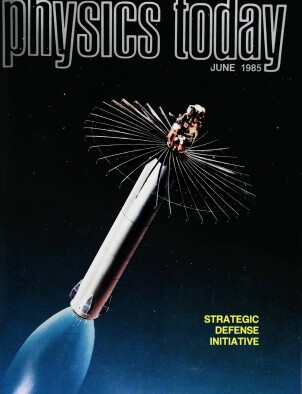The Strategic Defense Initiative: Perception vs Reality
DOI: 10.1063/1.880977
We have witnessed over the last year or so an enormous growth in the political impact, if not the technical impact, of the President’s Strategic Defense Initiative, popularly called “Star Wars.” Some argue that without this initiative the Soviets would not have “returned to the bargaining table” to resume talks on strategic and intermediaterange weapons. Others argue that with SDI the United States cannot possibly reach an arms‐control agreement with the Soviet Union. The true believers assert that SDI points the way to a future free of nuclear weapons, while opponents claim that it is a sure‐fire prescription for a major escalation in the arms race, the militarization of space and a collapse of the current, albeit limited, arms‐control regime. (See Gerold Yonas’s article on page 24.)
This article is only available in PDF format
References
1. McG. Bundy, G. F. Kennan, R. S. McMamara, G. Smith, Foreign Affairs 63, 264 (Winter 1984–85).
2. See R. L. Garwin, K. Gottfried, D. L. Hasner, Sci. Am., June 1984, p. 45.
3. See J. Boswell, The Life of Samuel Johnson, quotation from 31 July 1763, Oxford U.P., Oxford (1982).
4. For an outline of a sensible nonconfrontational ABM research program, see S. D. Drell, T. Johnson, cochairmen, Strategic Missile Defense: Necessities, Prospects and Dangers in the Near Term, Stanford Ctr. for Intl. Security and Arms Control, Stanford, Calif., April 1985.
5. For an outline of allied response to SDI, see P. E. Gallis, M. M. Lowenthal, M. S. Smith, The Strategic Defense Initiative and United States Alliance Strategy, Congressional Research Service, Library of Congress, Washington, D.C., 1 February 1985.
6. For a thoughtful European response to the issue of working within the ABM Treaty, see the 15 March 1985 speech of British Foreign and Commonwealth Secretary Geoffrey Howe, British Embassy Information Department, Washington, D.C.
More about the Authors
Wolfgang K. H. Panofsky. Stanford Linear Accelerator Center.




